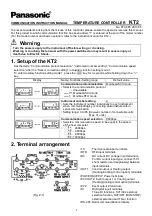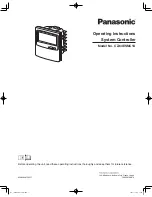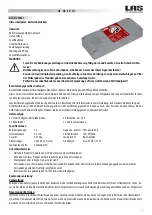
82571EB/82572EI EEPROM Information Guide
3
Finally, software can cause the 82571EB/82572EI to re-read part of the hardware accessed fields of
the EEPROM (setting the 82571EB/82572EI’s internal registers appropriately) by writing a 1b to
the
EEPROM Reset
bit of the Extended Device Control register (CTRL_EXT.EE_RST; bit 13).
1.4
Signature Fields and CRC Fields
The only way the 82571EB/82572EI can discover whether an EEPROM is present is by trying to
read the EEPROM. The 82571EB/82572EI first reads the EEPROM
Sizing & Protected
field Word
at address 12h. The 82571EB/82572EI checks the signature value for bits 15 and 14. If bit 15 is 0b
and bit 14 is 1b, it considers the EEPROM to be present and valid and reads additional EEPROM
words and programs its internal registers based on the values read. Otherwise, it ignores the values
it read from that location and does not read any other words.
In ASF Mode, the 82571EB/82572EI’s ASF function reads the ASF CRC word to determine if the
EEPROM is valid. If the CRC is not valid, the ASF Configuration registers retain their default
values. This CRC does not affect the remaining 82571EB/82572EI configuration, including the
Management Control register. For details on how the CRC is calculated see
.
Note:
When the signature is not correct (the EEPROM is blank), it cannot be accessed by parallel access
if its size is 512 bytes or smaller. As a result, the EEPROM should be accessed using the bit-bang
mechanism.
1.5
Protected EEPROM Space
The 82571EB/82572EI provides a mechanism for a hidden area in the EEPROM to the host. The
hidden area cannot be accessed via the EEPROM registers in the CSR space. It can be accessed
only by the Manageability (MNG) subsystem. For more information about the management
subsystem, contact your Intel field representative.
1.5.1
Initial EEPROM Programming
In most applications, initial EEPROM programming is done directly on the EEPROM pins.
Nevertheless, it is desirable to enable existing software utilities (accessing the EEPROM via the
host interface) to initially program the whole EEPROM without breaking the protection
mechanism. Following a power-up sequence, the 82571EB/82572EI reads the hardware
initialization words in the EEPROM. If the signature in word 12h does not equal 01b the EEPROM
is assumed as non-programmed. There are two effects for non-valid signature:
•
The 82571EB/82572EI stops reading EEPROM data and sets the relevant registers to default
values
•
The 82571EB/82572EI enables access to any location in the EEPROM via the EEPROM CSR
registers including the protected EEPROM space.










































